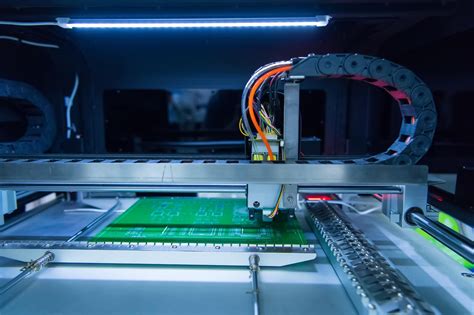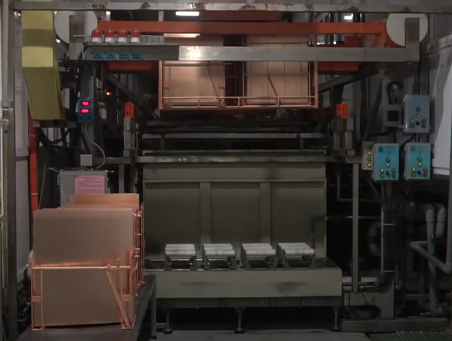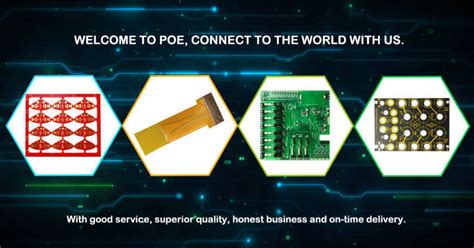Mastering the Art of Assembly Circuits: Unlocking Innovation in Electronics
Key Takeaways
Understanding the essentials of assembly circuits is crucial for anyone involved in electronics. A key element in this domain is pcb assembly, a process that transforms designs into functioning prototypes. This intricate procedure involves several stages, starting from the selection of appropriate components to their strategic placement on a printed circuit board (PCB), leading to optimized pcba outcomes. Enthusiasts and professionals alike can leverage various techniques to design efficient circuit assemblies, which not only enhance performance but also increase reliability. One vital aspect is understanding the materials used; high-quality components can drastically affect the final product’s effectiveness. Moreover, employing the right tools—ranging from soldering stations to automated pick-and-place machines—plays an indispensable role in achieving a successful assembly. As the field evolves, keeping pace with best practices and adapting to common challenges encountered during design will be invaluable. By mastering these aspects of assembly circuits, individuals can contribute to groundbreaking innovations and improvements in electronic technology.
Introduction to Assembly Circuits: The Backbone of Electronics Innovation
In today’s fast-paced technological landscape, assembly circuits serve as the cornerstone for innovation in electronics. From the design phase to the final product, the efficiency and reliability of pcb assembly can significantly influence the overall performance of electronic devices. The process of printed circuit board assembly (commonly referred to as PCBA) involves meticulous attention to detail, ensuring that every component is placed and soldered with precision. Understanding the fundamentals of assembly circuits allows engineers and hobbyists alike to push the boundaries of what is possible in systems ranging from consumer electronics to sophisticated industrial applications.
As you embark on this journey into assembly circuits, it’s essential to keep in mind that “the art lies not only in design but also in execution.” > This insight underscores the importance of mastering both theoretical knowledge and practical skills in creating robust circuit assemblies. Whether you’re developing a new wearable technology or optimizing an existing device, mastering the nuances of pcba will enable you to address common challenges, enhance reliability, and ultimately contribute to groundbreaking innovations within the field. Engaging with modern tools and techniques can further streamline this process, solidifying your projects as a testament to effective design and execution in electronic assembly.
Key Components and Materials Used in Assembly Circuits
In the realm of assembly circuits, various components and materials come into play, each fulfilling a specific role in the overall functionality and efficiency of electronic devices. At the heart of any PCB assembly is the printed circuit board itself, typically made from durable materials like fiberglass or epoxy resin, which provides a stable platform for circuit elements. Essential components include resistors, which regulate current flow; capacitors, which store and release energy; and integrated circuits (ICs), which house multiple functions in a compact form. Moreover, soldering materials such as lead-free solder are crucial for establishing reliable electrical connections between components. When evaluating a PCBA, attention must also be given to connectors and wiring harnesses that facilitate communication within larger systems. In addition to these standard parts, advanced materials such as flexible substrates and heat-resistant laminates are increasingly popular, allowing designs that can withstand varying environmental conditions while maintaining performance integrity. Selecting the right mix of components not only enhances performance but also contributes to the overall reliability and longevity of electronic products, making it essential for both hobbyists and professionals engaged in circuit assembly projects to stay informed about the latest advancements in component technology.
Essential Techniques for Designing Efficient Circuit Assemblies
Designing efficient circuit assemblies is a fundamental aspect of electronics engineering, significantly influencing the performance and reliability of pcb assembly or pcba projects. To begin with, understanding schematic design principles is crucial. A well-structured schematic serves as a roadmap, ensuring that each component functions cohesively. Afterward, selecting the right components is vital; choices around resistors, capacitors, and ICs can dramatically impact circuit performance.
Moreover, employing techniques like modular design allows engineers to create reusable circuit blocks, which enhance both the efficiency of production and the potential for innovation. It’s also essential to consider thermal management during the design process; using thermal vias and correct placement of heat sinks helps to maintain optimal operating temperatures.
In this context, a table detailing key material properties might be beneficial:
| Component Type | Thermal Conductivity | Tolerance | Use Case |
|---|---|---|---|
| Resistors | Moderate | ±5% | Voltage division |
| Capacitors | Low | ±10% | Filtering applications |
| ICs | Varied | ±2% | Complex processing tasks |
In addition to these techniques, adhering to manufacturing standards greatly enhances the final product’s reliability. Utilizing guidelines such as IPC-A-610 ensures that each assembly meets a high-quality benchmark. Lastly, iterative prototyping—as a practice—allows for testing and validation at each design stage, leading to improvements before full-scale production.
By mastering these essential techniques in designing efficient circuit assemblies, practitioners can harness the power of pcba processes effectively, unlocking greater potential for innovation in their electronic designs.
Tools of the Trade: Must-Have Equipment for Circuit Assembly
When venturing into the world of pcb assembly, having the right tools is essential for achieving optimal results in your circuit projects. At the forefront of equipment is the soldering iron, a crucial instrument for connecting components to the printed circuit board (PCB). Pairing this with an efficient soldering station can significantly enhance your workflow, allowing you to maintain precise temperature control and adjust settings as needed during the pcba process. Furthermore, a reliable multimeter is indispensable for testing and troubleshooting circuits; it ensures that connections are sound and components function correctly before final assembly.
In addition to these tools, a good-quality rework station can prove invaluable when modifications are necessary; it enables technicians to easily replace faulty components without damaging surrounding areas. Another vital piece of equipment is an intelligent solder paste dispenser, which plays a significant role in surface mount technology (SMT), streamlining the deposition process for accurate placements. Finally, to maintain organization and efficiency, consider investing in component storage systems; these can keep resistors, capacitors, and other parts neatly sorted and easily accessible during assembly.
By equipping yourself with these essential tools, you’ll be better positioned to tackle both simple projects and complex designs with confidence, ensuring high levels of performance and reliability in your pcb assembly endeavors. Each piece of equipment contributes uniquely to enhancing your capabilities and fostering innovation in electronics design.
Best Practices for Enhancing Performance and Reliability
To achieve the highest performance and reliability in pcb assembly, following best practices is essential. Firstly, meticulous design is crucial; ensuring that the layout is optimized for signal integrity can drastically reduce issues in performance. Utilizing high-quality materials, such as FR-4 for substrates, can improve durability and conductivity. Additionally, proper component selection plays a vital role—choosing resistors and capacitors with the correct ratings helps to prevent thermal-related failures.
During the assembly process, maintaining a clean environment is key. Dust and contaminants can interfere with solder joints and electrical connections, leading to failures down the line. Employing automated soldering techniques enhances precision, reducing human error and ensuring consistent joint quality. Regular inspections using X-ray machines or optical inspection systems can help identify potential defects early in the process.
Moreover, employing effective thermal management strategies—such as using thermal pads or proper heatsinks—can significantly prevent overheating issues in assembled circuits. It’s also important to ensure that all components are compatible with each other; utilizing a comprehensive library of certified parts within your pcba workflow ensures seamless integration.
Lastly, rigorous testing protocols should be established before any product launch. Implementing stress tests under various conditions will validate functionality and reliability across a spectrum of real-world scenarios. By adhering to these best practices in assembly circuits, engineers and hobbyists alike can unlock new levels of innovation in electronics projects, paving the way for advancements that push the boundaries of technology.
Common Challenges in Assembly Circuit Design and How to Overcome Them
Designing effective assembly circuits, particularly in pcb assembly (Printed Circuit Board Assembly), presents various challenges that can impede the performance and reliability of the final product. One of the primary challenges is ensuring precision in component placement. Improper placement can lead to malfunctions and increased production costs. To address this, using automated assembly techniques can significantly enhance alignment accuracy, reducing human error during the pcba (Printed Circuit Board Assembly) process. Additionally, managing thermal issues is crucial since overheating can compromise both component integrity and circuit functionality. Employing thermal management techniques such as heat sinks or thermal pads helps dissipate heat effectively.
Another common hurdle is dealing with the complexity of circuit designs, which often requires a fine balance between functionality and manufacturability. To tackle this, designers should prioritize a modular approach, breaking down complex circuits into manageable segments that simplify both design and testing phases. Moreover, utilizing advanced simulation software can facilitate early identification of potential issues, allowing for timely adjustments before actual production starts.
Lastly, sourcing reliable components is essential but can often be challenging due to varying quality standards across suppliers. Conducting thorough vetting of suppliers and establishing strong relationships ensures access to high-quality materials required for successful pcba projects. By acknowledging these challenges and implementing strategic solutions, designers can significantly improve their workflow and enhance the overall outcomes of their assembly circuit endeavors.
Real-World Applications and Case Studies of Assembly Circuits
Assembly circuits, often referred to as pcb assembly or pcba, play a pivotal role in various industries by enabling the functionality of numerous devices that shape our daily lives. From the automotive sector, where assembly circuits are essential for temperature control systems and electronic braking mechanisms, to medical devices that rely on high reliability and precision, the significance of well-designed circuit assemblies cannot be overstated. For instance, in consumer electronics, smartphones utilize pcb assembly techniques to manage sophisticated components that offer seamless user experiences. Notably, advancements in these circuits have led to the development of wearables that monitor health metrics in real-time, showcasing how innovative designs fuel technological breakthroughs. Moreover, numerous companies have shared their success stories through case studies highlighting how specific pcba practices enhanced product performance and reduced production costs. These real-world examples not only demonstrate the versatility of assembly circuits but also serve as benchmarks for aspiring engineers looking to optimize their own designs. By analyzing such applications and case studies, industry professionals can glean insights into effective methodologies that lead to improved efficiency and reliability in their projects.
The Future of Assembly Circuits: Trends and Innovations in Electronics
As we look towards the future, the landscape of assembly circuits is poised for significant transformation driven by technological advances and evolving industry needs. One prominent trend is the increasing integration of pcb assembly and pcba processes with automation and artificial intelligence. These innovations promise to enhance precision, reduce production costs, and improve the overall efficiency of circuit assembly practices. Moreover, as consumer demands for compact and multifunctional devices grow, advancements in miniaturization techniques will enable engineers to design more complex circuit assemblies while maintaining robustness. The application of advanced materials that enhance thermal management and durability will also play a crucial role in the evolution of assembly circuits. Another exciting development is the rise of sustainable manufacturing practices that focus on minimizing waste and utilizing eco-friendly components in pcba processes. Such trends are not only shaping the way we approach electronic design but also inspiring a new wave of creative solutions that could redefine how we interact with technology in our daily lives. By embracing these emerging innovations, designers and engineers can position themselves at the forefront of the electronics industry, ready to tackle tomorrow’s challenges with creativity and efficiency.
Conclusion
In summarizing the insights gathered from this exploration of assembly circuits, it is crucial to acknowledge their pivotal role in the advancement of modern electronics. Throughout the article, we’ve examined various components, techniques, and tools essential for effective pcb assembly or PCBA. The integration of innovative approaches within these designs not only enhances operational efficiency but also promotes reliability and performance. As we move forward, understanding the intricate details involved in these assemblies will equip both enthusiasts and professionals with the ability to tackle common challenges that may arise during the design and implementation phases. This knowledge serves as a gateway for fostering further technological advancements and streamlining future projects, reinforcing that mastery over assembly circuits is indeed key to unlocking innovation in electronics. The emphasis on foundational principles paired with emerging trends ensures that those who engage with these systems are well-prepared to contribute meaningfully to the evolving landscape of electronics. Each circuit assembled is a step towards greater creativity and efficiency, transforming ideas into functional realities.
FAQs
When navigating the complexity of pcb assembly and understanding the nuances of pcba, it’s common to have questions that arise during the process. Many individuals wonder about the differences between pcb assembly and other related terms, or they may seek clarification on best practices for integrating components. One frequently asked question is: “What are the key factors that influence the success of a pcba project?” The success of a pcba project largely hinges on several critical elements such as the selection of quality materials, precise design layouts, and effective sourcing strategies for components. Another common query pertains to troubleshooting during assembly: “How can I effectively address issues like poor soldering or misalignments?” Addressing these challenges often requires careful inspection, utilizing tools such as microscopes for detailed examination and reworking techniques to fix any discrepancies. Additionally, professionals often inquire about the latest innovations in pcb assembly technology. Staying informed about advancements—from automated assembly systems to more efficient soldering techniques—can significantly enhance both productivity and reliability in projects. For those looking to delve deeper into the world of pcb assembly, acquiring practical knowledge through resources is highly beneficial.






